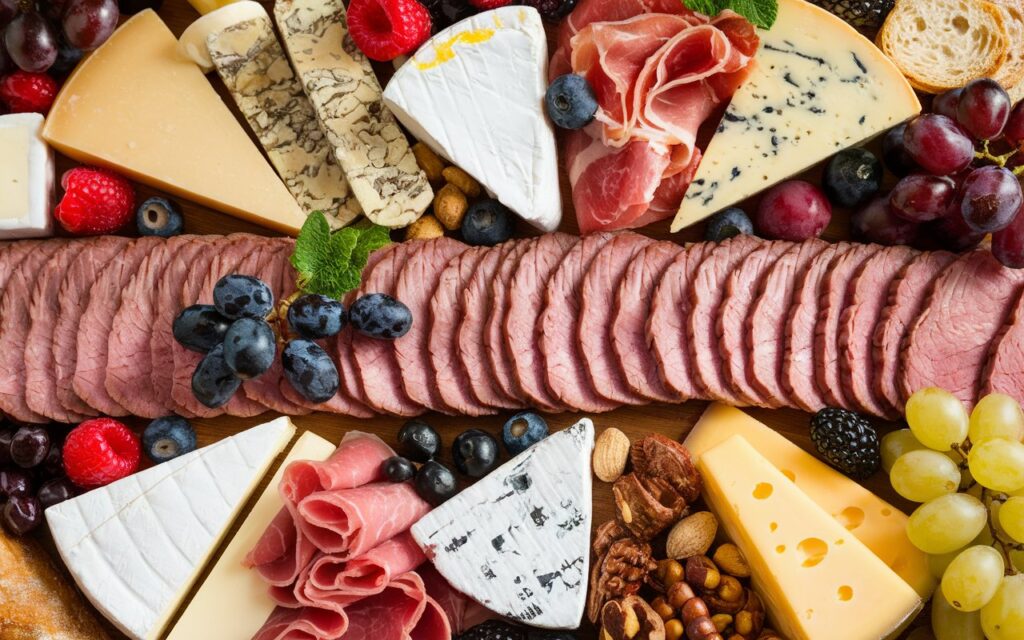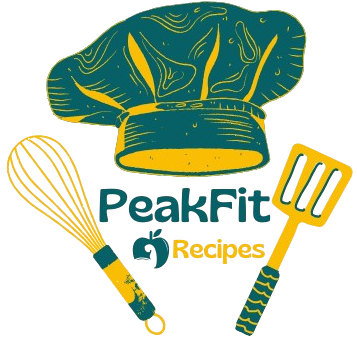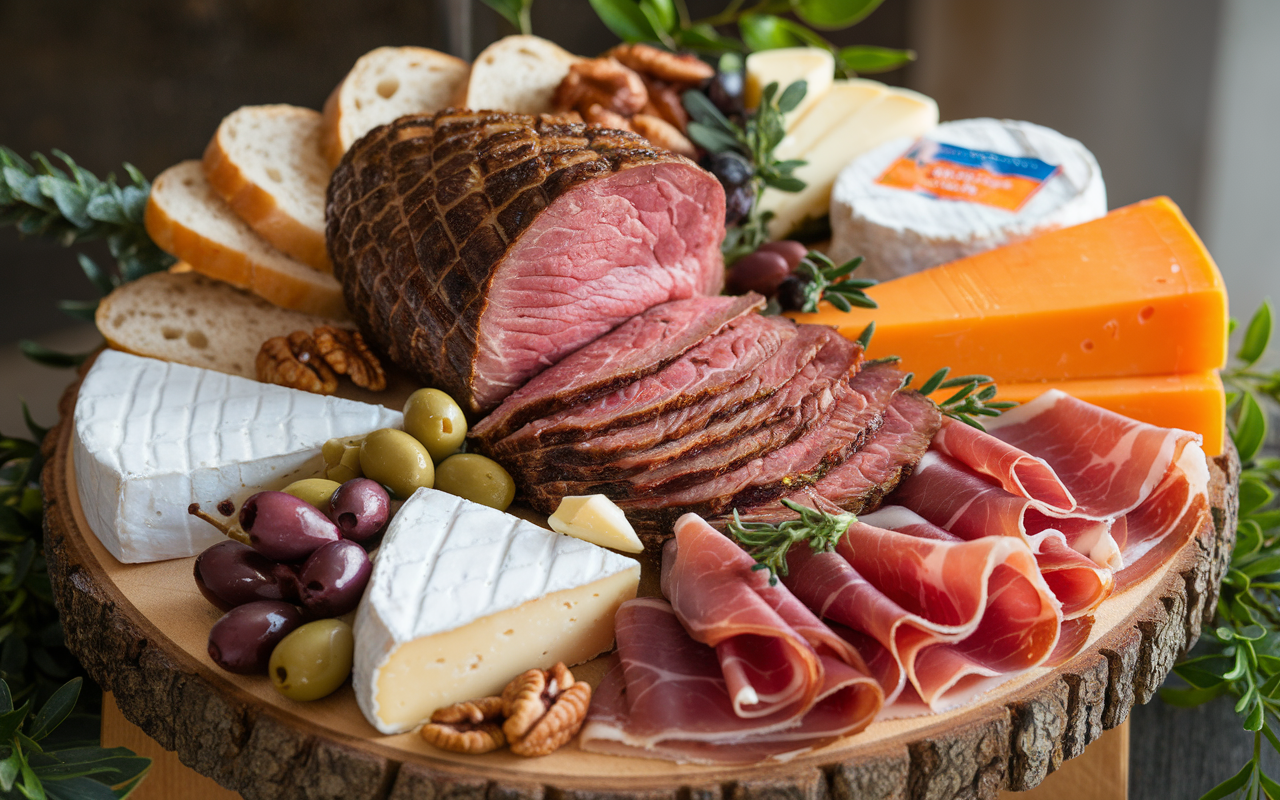Roast beef is a versatile and flavorful dish that pairs beautifully with a variety of cheeses. Whether you’re creating a classic roast beef sandwich, a hearty casserole, or a charcuterie board, the right cheese can elevate the dish, adding depth, creaminess, or even a hint of tang. But what kind of cheese goes with roast beef? Let’s explore the best options and pairing strategies to make your meal unforgettable.
Why Pair Cheese with Roast Beef?
Cheese complements the rich, savory flavors of roast beef by providing a creamy, tangy, or slightly salty counterbalance. Moreover, the type of cheese you choose can significantly enhance the dish’s texture and flavor profile. For example, sharp cheddar can cut through the beef’s richness, while creamy brie adds a smooth, luxurious touch. Additionally, pairing the right cheese creates a balance that elevates the entire meal. Therefore, understanding the nuances of different cheeses is key to achieving the perfect pairing.
- Melty cheeses create gooey goodness in sandwiches.
- Sharp cheeses contrast the beef’s savory richness.
- Mild, creamy cheeses balance out stronger condiments or seasonings.
For more pairing ideas, check out this article on gourmet food pairings to inspire your next culinary masterpiece.
Best Cheeses to Pair with Roast Beef
1. Cheddar
Cheddar is a go-to choice for roast beef. Its sharpness adds depth, while its creamy texture melts beautifully. Opt for aged cheddar for stronger flavor or mild cheddar for a subtle touch.
- Why It Works: The bold, tangy notes of cheddar cut through the beef’s richness.
- Best Uses: Roast beef sandwiches, paninis, or sliders.
2. Swiss Cheese
Swiss cheese offers a mild, nutty flavor that complements roast beef without overpowering it. Its smooth texture works perfectly for warm, melted dishes.
- Why It Works: Swiss cheese is mild yet flavorful, enhancing the beef’s natural taste.
- Best Uses: Classic roast beef sandwiches, Reubens, or wraps.
3. Provolone
Provolone is another excellent option for roast beef. Its semi-hard texture and smoky undertones make it a versatile choice for both hot and cold dishes.
- Why It Works: Provolone’s mild smokiness pairs well with roast beef’s savory flavors.
- Best Uses: Philly cheesesteaks, cold-cut sandwiches, or pasta bakes.
4. Blue Cheese
For those who enjoy bold flavors, blue cheese is a stellar choice. Its creamy texture and tangy, salty flavor make it a standout addition.
- Why It Works: The intense, tangy profile of blue cheese adds complexity to roast beef dishes.
- Best Uses: Gourmet sandwiches, salads with roast beef, or charcuterie boards.
5. Gruyère
Gruyère is a Swiss cheese known for its rich, nutty flavor. It melts exceptionally well, making it ideal for hearty roast beef dishes.
- Why It Works: Gruyère’s depth of flavor enhances roast beef’s savory notes.
- Best Uses: French dip sandwiches, gratins, or casseroles.
6. Cream Cheese
Cream cheese might not be the first choice for pairing with roast beef, but its smooth, spreadable consistency makes it a unique addition.
- Why It Works: Its mild, creamy flavor balances bold seasonings or sauces.
- Best Uses: Bagels with roast beef, wraps, or hors d’oeuvres.
Creative Pairings for Roast Beef and Cheese
Sandwich Ideas
Combine roast beef with the following cheese options to create flavorful sandwiches:
- Roast beef, cheddar, and horseradish sauce.
- Roast beef, Swiss cheese, and caramelized onions.
- Roast beef, provolone, and sautéed mushrooms.
For tips on perfect sandwich combinations, see this guide to building gourmet sandwiches.
Cheese Boards
If you’re preparing a charcuterie board, include roast beef slices alongside:
- Aged cheddar
- Brie
- Gorgonzola
- Smoked Gouda
Add complementary items like olives, crackers, and roasted nuts for balance.
Casseroles and Bakes
Roast beef casseroles benefit from melty cheeses like mozzarella, Gruyère, or Monterey Jack. Sprinkle shredded cheese on top before baking for a golden, bubbly crust.
The Science Behind Cheese and Roast Beef Pairings
Delve into why certain cheeses pair so well with roast beef. Explore how factors like fat content, flavor profiles, and texture influence the pairing. For example, discuss how high-fat cheeses like blue cheese enhance the savory umami of roast beef, while mild cheeses like provolone balance its richness. Include details about the Maillard reaction in roasted meat and how cheese flavors can complement or contrast with it.
Key Points:
- How fat content in cheese enhances flavor.
- The role of umami in roast beef and cheese.
- Textural contrasts: creamy cheeses with firm beef slices.
Regional and Cultural Cheese Pairings for Roast Beef
How Different Cuisines Pair Cheeses with Roast Beef
Cheese and roast beef combinations vary widely across cuisines, reflecting regional preferences and culinary traditions. Moreover, each culture brings unique ingredients and preparation methods that influence these pairings, creating exciting and flavorful dishes. For example, Italian, French, and American cuisines each offer distinct ways to pair roast beef with cheese, showcasing the versatility of this classic duo.
Italian Pairings: Mozzarella and Provolone
In Italian cuisine, roast beef often appears in simple yet flavorful dishes. Typically, mild, creamy cheeses like mozzarella or provolone are used. For instance, an Italian roast beef panini combines tender slices of beef with melted provolone, arugula, and a drizzle of olive oil. Additionally, mozzarella is a staple in roast beef pizzas, where its gooey texture complements the beef’s savory notes.
French Pairings: Gruyère and Camembert
The French approach roast beef with elegance, pairing it with refined cheeses like Gruyère or Camembert. For example, a French dip sandwich, served with au jus, is often enhanced by Gruyère’s nutty richness. Furthermore, creamy Camembert adds a luxurious touch to gourmet roast beef platters. Consequently, these pairings elevate the flavors, creating a well-balanced and satisfying experience.
American Pairings: Cheddar and Monterey Jack
In American cuisine, bold and approachable flavors dominate. Specifically, sharp cheddar and Monterey Jack are common choices for roast beef dishes. For example, a classic roast beef sandwich with cheddar offers a satisfying combination of tangy and savory flavors. Meanwhile, Monterey Jack provides a milder alternative that melts beautifully in roast beef sliders or quesadillas. Altogether, these cheeses reflect the hearty, comforting style of American cooking.
Historical and Culinary Insights
Cheese and roast beef pairings have evolved over time, influenced by cultural exchanges and local ingredients. Historically, European immigrants brought cheese traditions to the United States, merging them with American-style roast beef recipes. Consequently, iconic dishes like the Philly cheesesteak were born. Today, these pairings continue to highlight the adaptability of roast beef, inspiring creative interpretations across the globe.
Key Points:
- Italian-style roast beef with provolone or Parmesan.
- Revised: For example, Italian-style roast beef often pairs well with provolone or Parmesan, which enhance its rich flavors.
- French traditions like Gruyère on a croque-monsieur.
- Revised: Similarly, French traditions highlight Gruyère, particularly in dishes like a croque-monsieur, to complement the savory beef.
- American deli-style roast beef sandwiches with sharp cheddar.
- Revised: Meanwhile, American deli-style sandwiches often feature sharp cheddar, providing a bold contrast to the roast beef.
How to Build the Perfect Roast Beef and Cheese Platter
Guide readers on crafting an elegant roast beef and cheese platter for parties or gatherings. Focus on selecting complementary cheeses, adding accompaniments like crackers, fruit, and spreads, and arranging everything attractively. This section can also include tips for choosing wine or beer pairings to elevate the experience.
Key Points:
- Best cheeses for a roast beef platter.
- Recommended accompaniments (e.g., pickles, mustards, figs).
- Presentation tips for a stunning display.
Tips for Melting Cheese Perfectly on Roast Beef
Melting cheese is an art that can transform a roast beef dish into a gooey masterpiece. This section offers practical advice on how to achieve the perfect melt. Cover techniques like broiling, grilling, or pan-searing. Explain why some cheeses melt better than others based on their moisture content and fat levels.
Key Points:
- Best cheeses for melting (e.g., Gruyère, cheddar, mozzarella).
- Techniques for even melting: oven broiling, stovetop, or blowtorch.
- How to avoid overcooking cheese and making it greasy.
Healthier Cheese Options for Roast Beef
For health-conscious readers, suggest lower-fat or alternative cheese options that still pair well with roast beef. Discuss how to balance flavors without sacrificing richness. Include plant-based cheese alternatives for vegan readers.
Key Points:
- Low-fat options like part-skim mozzarella or reduced-fat Swiss.
- Nutritional comparisons of popular cheese choices.
- Plant-based cheeses made from cashews, almonds, or soy that pair well with roast beef.
Seasonal Cheese Pairings for Roast Beef
Explore how seasonal changes can influence the best cheese pairings with roast beef. For example, recommend heavier, richer cheeses like Gruyère in winter and lighter options like goat cheese or fresh mozzarella in summer.
Key Points:
- Winter pairings: hearty cheeses like Gruyère or aged cheddar.
- Summer pairings: light, tangy cheeses like feta or chèvre.
- Using seasonal fruits (e.g., pears in fall, berries in spring) to complement cheese and roast beef.
How to Pair Condiments with Cheese and Roast Beef
Condiments can elevate the flavors of both cheese and roast beef. Suggest combinations like sharp mustard with cheddar or horseradish cream with blue cheese. Include tips on choosing spreads, sauces, or pickles to enhance each pairing.
Key Points:
- Bold condiments (e.g., horseradish, Dijon mustard) with sharp cheeses.
- Sweet additions (e.g., honey, cranberry chutney) with creamy cheeses.
- Savory spreads (e.g., aioli, tapenade) for balanced pairings.
Cheese and Roast Beef in Global Cuisines
Take a deep dive into how roast beef and cheese combinations appear in global cuisines. Highlight examples like Philly cheesesteaks in the U.S., roast beef and Stilton pies in the U.K., and roast beef pizzas with mozzarella in Italy.
Key Points:
- The role of cheese in classic U.S. dishes like cheesesteaks.
- British traditions like Stilton and beef pairings.
- European influences, including fondue and roast beef.
Cheese Storage and Serving Tips for Roast Beef Dishes
Teach readers how to store cheese properly to preserve its flavor and texture for roast beef recipes. Discuss how to serve cheese at the right temperature to maximize taste.
Key Points:
- Proper cheese storage to prevent drying or mold.
- Serving cheese at room temperature for optimal flavor.
- How to slice cheese to complement roast beef dishes (e.g., thin for sandwiches, chunks for platters).
- How to Cook Perfect Roast Beef Every Time
- 10 Best Side Dishes for Roast Beef
- The Ultimate Guide to Sandwich Pairings
Cheese and Roast Beef Wine Pairings
For an elevated dining experience, guide readers on pairing wines with their cheese and roast beef combinations. Suggest red wines like Cabernet Sauvignon with sharp cheeses and roast beef or white wines like Chardonnay with creamier options.
Key Points:
- Wine pairings for sharp cheeses (e.g., cheddar with bold reds).
- Lighter wines for mild cheeses like Swiss or mozzarella.
- Tips for pairing beer or non-alcoholic drinks with roast beef and cheese.

How to Choose the Right Cheese for Your Roast Beef Dish
Guide readers step-by-step through selecting the best cheese based on the type of roast beef dish they are making. Different preparations of roast beef—whether it’s sliced cold, served hot, or incorporated into a stew—can influence the ideal cheese pairing.
Key Points:
- For cold roast beef: Opt for sharp, tangy cheeses like aged cheddar or blue cheese.
- For hot roast beef dishes: Go with melty cheeses like provolone or Gruyère.
- For stews or casseroles: Use cheeses that enhance creaminess, such as Monterey Jack or mozzarella.
The Role of Texture in Cheese and Roast Beef Pairings
Explain how cheese texture plays a crucial role in creating a balanced dish. Whether you want a gooey melt or a crumbly topping, texture affects the overall eating experience.
Key Points:
- Soft cheeses: Great for spreads or creamy sauces (e.g., cream cheese, brie).
- Semi-hard cheeses: Perfect for sandwiches and melts (e.g., provolone, Swiss).
- Hard cheeses: Best for grating or adding sharpness (e.g., Parmesan, aged cheddar).
Popular Roast Beef and Cheese Recipes
Provide specific recipes that incorporate roast beef and cheese pairings. Each recipe could include detailed instructions and tips for achieving the best flavor.
Example Recipes:
- Classic Roast Beef and Cheddar Panini
- Thin-sliced roast beef, aged cheddar, and caramelized onions on sourdough bread.
- Provolone-Stuffed Roast Beef Roll-Ups
- Rolled roast beef slices filled with provolone, spinach, and roasted red peppers.
- Roast Beef and Gruyère French Dip
- Served with au jus and melted Gruyère on a crusty baguette.
Cheese Pairings for Different Cuts of Roast Beef
Different cuts of roast beef (e.g., top round, prime rib, brisket) may pair better with certain cheeses. Dive into the characteristics of various cuts and the cheeses that best complement them.
Key Points:
- Lean cuts (e.g., top round): Pair well with creamy cheeses like mozzarella or brie.
- Rich cuts (e.g., prime rib): Match bold flavors like blue cheese or sharp cheddar.
- Smoked cuts: Enhance with smoky cheeses like smoked Gouda or provolone.
Cheese Pairings with Roast Beef in Salads
Highlight how cheese can elevate roast beef in salad recipes. Discuss how textures and flavors come together to create a balanced dish.
Key Points:
- Feta or goat cheese for tangy, fresh flavors.
- Parmesan or Asiago for salty, nutty accents.
- Gorgonzola or blue cheese for bold, creamy additions.
Example Salad: Roast beef, arugula, shaved Parmesan, cherry tomatoes, and balsamic glaze.
Cheese Pairings for Roast Beef Burgers
Explore the perfect cheeses for burgers made with roast beef. Discuss how melty or bold cheeses can enhance a gourmet burger experience.
Key Points:
- Classic pairings: American cheese or cheddar for gooey melts.
- Gourmet options: Gruyère or blue cheese for elevated flavors.
- Unique twists: Brie or smoked Gouda for a luxurious touch.
The History of Cheese and Roast Beef Pairings
Add a historical perspective by discussing how the combination of roast beef and cheese evolved over time. Reference cultural influences and culinary traditions that have made these pairings popular.
Key Points:
- Historical use of cheese with roast meats in Europe.
- The emergence of roast beef and cheese sandwiches in the U.S.
- Modern adaptations like Philly cheesesteaks and roast beef sliders.
Cheese Pairings for Roast Beef Wraps and Rolls
Offer ideas for pairing cheese with roast beef in wraps and rolls for quick, portable meals. Focus on cheeses that enhance the flavor without overpowering the dish.
Key Points:
- Swiss or provolone for mild, melty options.
- Havarti or Monterey Jack for smooth, creamy texture.
- Cheddar or Gouda for sharp, robust flavor.
How to Experiment with Unique Cheese Pairings
Encourage readers to experiment with less traditional cheese pairings to discover new flavors. Offer guidance on selecting unusual but complementary options.
Key Points:
- Brie with roast beef for a creamy, decadent option.
- Halloumi for a firm, grilled pairing.
- Truffle-infused cheese for a luxurious twist.
Cheese Pairings with Roast Beef and Bread Options
Dive deeper into how bread choice affects the cheese pairing. Different breads bring out different flavors in the roast beef and cheese combination.
Key Points:
- Crusty baguettes with Gruyère for French-style sandwiches.
- Whole grain bread with Swiss or cheddar for hearty sandwiches.
- Ciabatta or focaccia with provolone for an Italian touch.
Non-Dairy Cheese Alternatives for Roast Beef
For readers with dietary restrictions, suggest non-dairy cheese options that pair well with roast beef. Include tips on selecting the best plant-based cheeses for different dishes.
Key Points:
- Cashew-based cheese for creamy textures.
- Soy-based cheddar or mozzarella for melting.
- Nutritional yeast as a savory topping alternative.
Cheese Pairings for Roast Beef Breakfast Dishes
Highlight how roast beef and cheese can be incorporated into breakfast dishes. Discuss pairings for omelets, breakfast sandwiches, or savory pastries.
Key Points:
- Gruyère or cheddar in breakfast omelets with roast beef.
- Swiss or cream cheese in bagel sandwiches.
- Parmesan or feta in savory pastries with beef fillings.
Frequently Asked Questions (FAQs)
What is the best cheese for roast beef?
The Best Cheese for Your Dish
The best cheese depends on your dish. For example, sharp cheddar or Gruyère works well for bold flavors, whereas Swiss or provolone is ideal for milder combinations. Additionally, the way the roast beef is prepared can influence your choice, so it’s important to consider the cooking method.
What Is a Classic Accompaniment for Roast Beef?
Apart from cheese, classic accompaniments for roast beef include horseradish sauce, au jus, or caramelized onions. Indeed, these additions enhance the beef’s rich flavor profile, while balancing its savory notes. Furthermore, they pair seamlessly with many cheeses, creating a harmonious dish.
What Cheese Tastes Good with Beef?
Generally speaking, beef pairs well with cheeses like cheddar, blue cheese, and Gruyère. In particular, your choice depends on whether you prefer sharp, bold, or mild flavors. For instance, cheddar offers a robust taste, while blue cheese provides a tangy, creamy contrast.
What Pairs Well with Roast Beef?
In addition to cheese, roast beef pairs beautifully with crusty bread, creamy sauces, and fresh greens. For example, a hearty baguette complements the texture of roast beef, while provolone or Swiss cheese enhances its flavors. Moreover, adding fresh greens introduces a refreshing balance to the dish.

